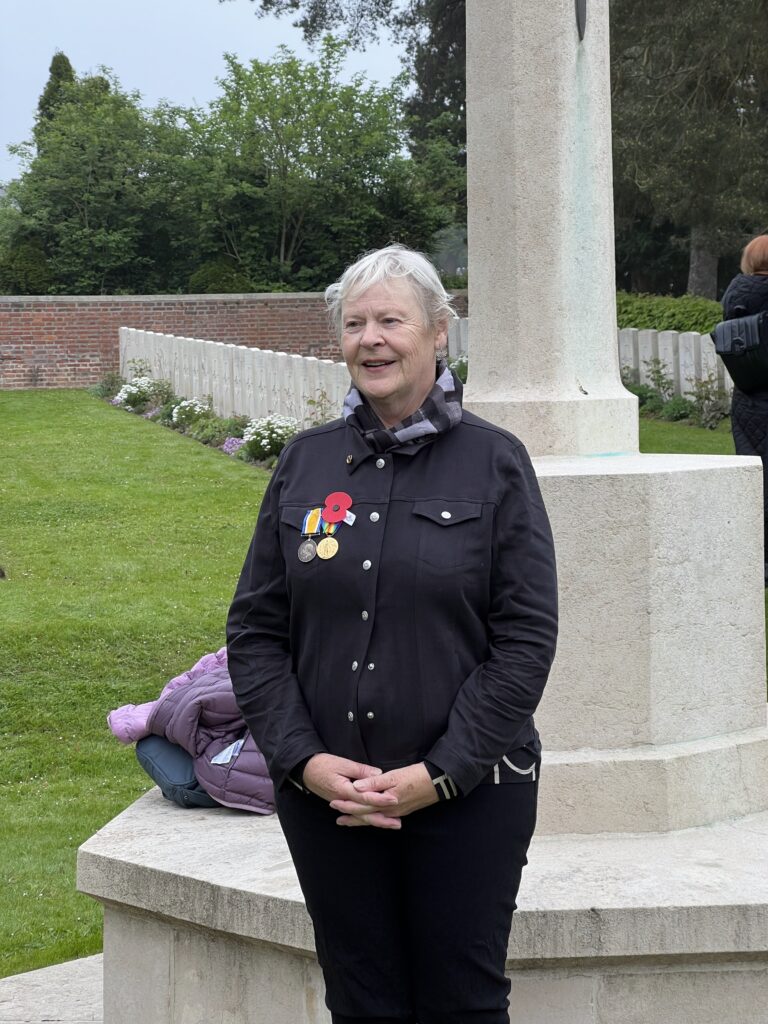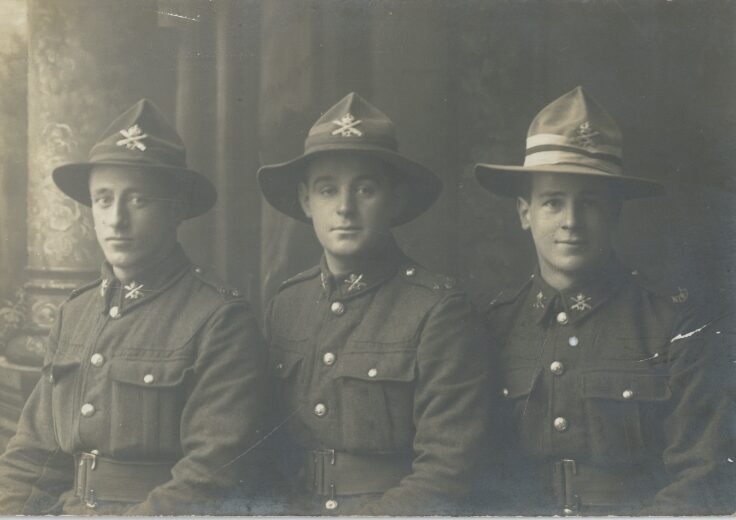Roy Cragg, like many New Zealand soldiers, kept a diary during his time in the trenches. However, unlike so many of his fellow writers, Roy’s record of the war omits much of the horrors of conflict, owing to the fact that his journal was designed to be sent home to parents and siblings eager to read of his safety.
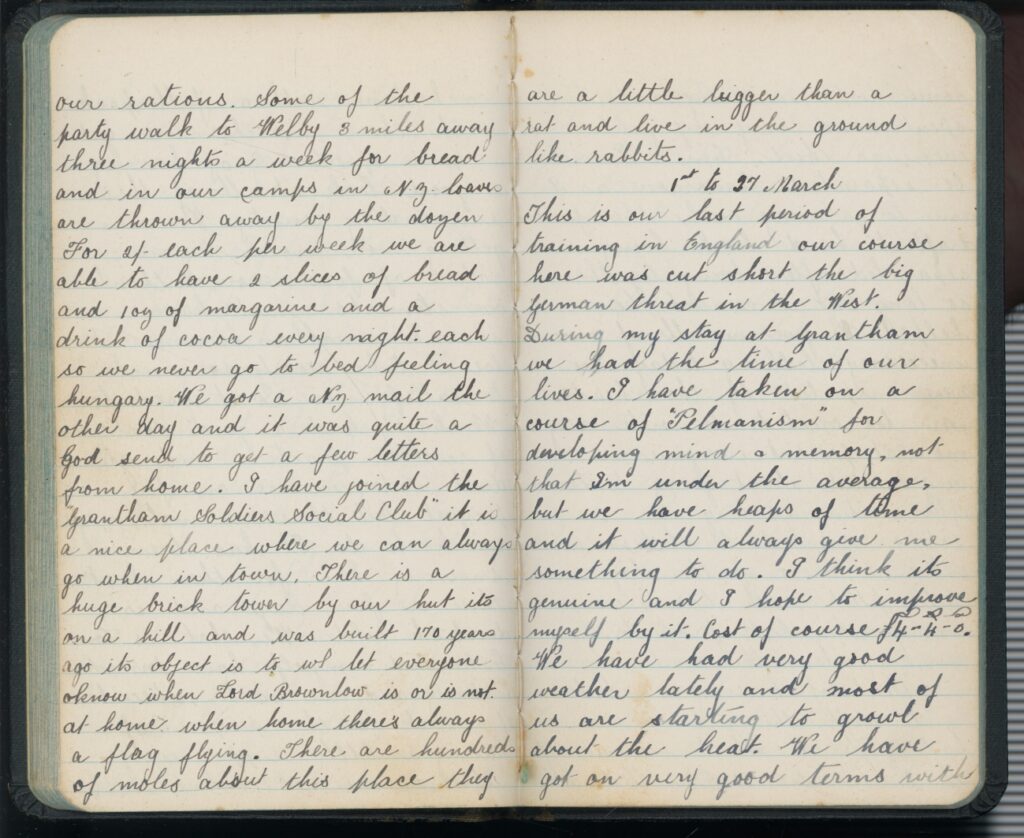
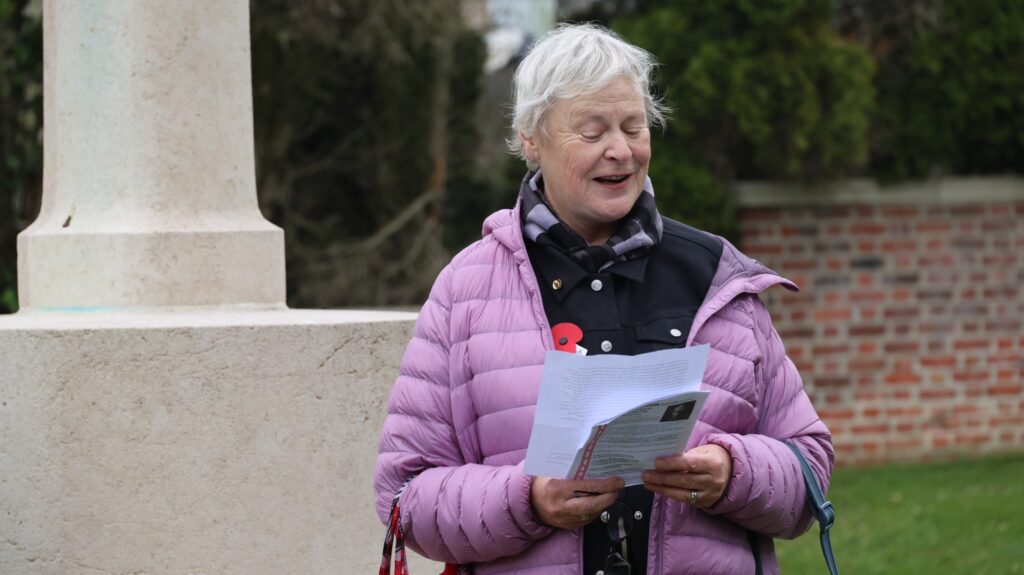
The resulting diary is today treasured by Roy’s granddaughter, Kerrie Ashcroft. Kerrie, who knew Roy as “Pop”, has pored over Roy’s self-censured writings and compared it against his military records. Roy’s notes contain no mention of the gas attack which sent him away from the Front for months, nor does he write of the pain he must have felt on learning that his friend, Tom, had been killed.
With patience and attention, Kerrie has read between the lines and developed a deeper understanding of her beloved Pop’s journey to Le Quesnoy, and beyond. She made a personal pilgrimage to retrace Roy’s steps in 2019, and participated in this year’s Anzac Day commemorations at the New Zealand Liberation Museum – Te Arawhata.
Kerrie also read sections of Roy’s diary and a poem by Wilfred Owen at a ceremony at the Le Quesnoy Communal Cemetery Extension, the final resting place of 49 New Zealand soldiers.
Kerrie, a keen journal-writer herself, has written the following story about her Pop and her experiences visiting the Western Front.
Private Edmund Roy Cragg
Specialists Company
30th Reinforcements
Machine Gun Section
NZ Expeditionary Force
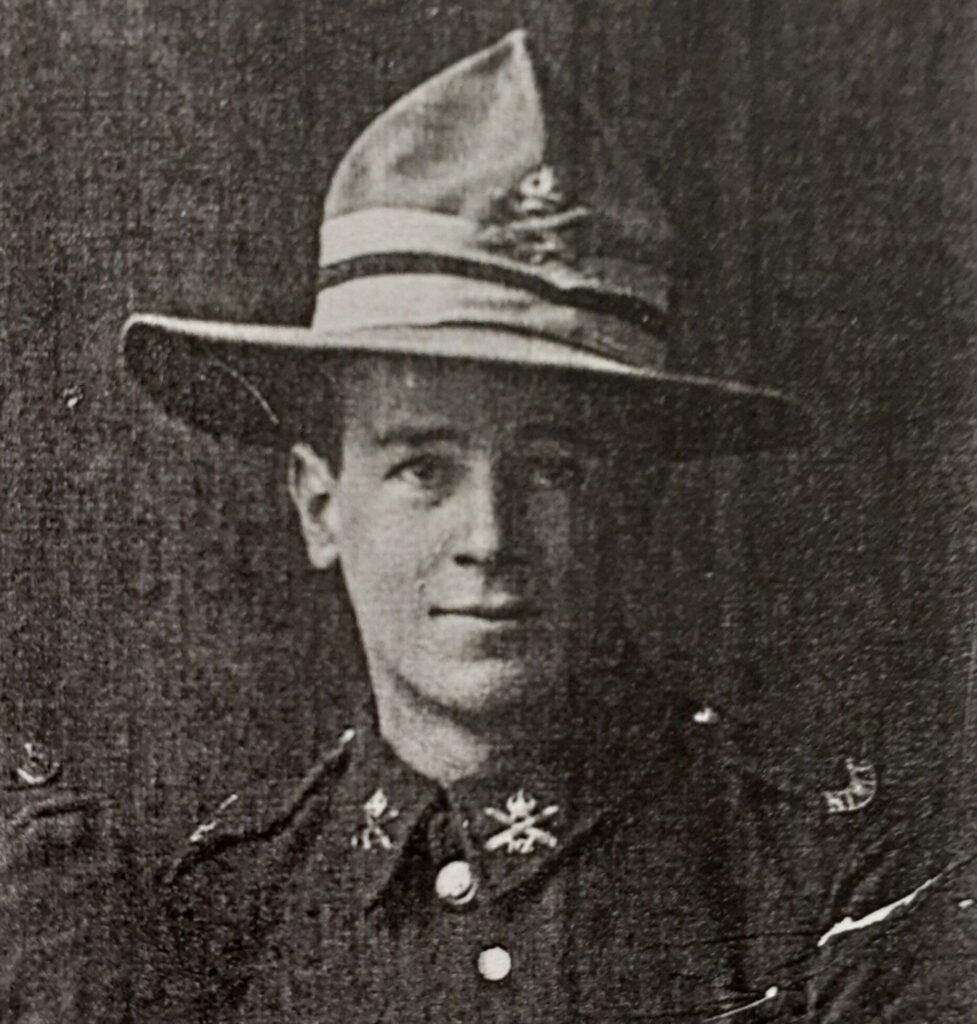
Edmund Roy Cragg was an engineering student when he signed up to join the NZ Expeditionary Forces 3 days after his 20th birthday, on 24th March 1917. Roy was born in Picton in the South Island of New Zealand. He was the youngest son of Richard and Mary Cragg, a farmer and butcher in the small coastal town and was undoubtedly spoilt rotten by his six older sisters and one older brother.
Roy, like many other soldiers wrote a diary capturing his experiences from leaving New Zealand to his return to the UK after the war ended. He was a keen observer of all things engineering and farming life, crop harvest and village life.
After returning home from the war in 1919, Roy sought a lifestyle of peace and quiet. He gave up his engineering career and with the help of his mother, bought a farm in Blenheim, New Zealand. He became a beekeeper and orchardist, growing plums, peaches and apples, as well as running a successful apiary. The war led to another change in his life. He had travelled to England and trained with a good friend, Tom Wainwright. Tom often received letters from his cousin Evelyn in Northampton, and Roy enjoyed reading them too. When Tom was killed in France, Roy took over writing to Evelyn and a romance blossomed. When the war was over, Roy visited with Evelyn and subsequently they married, travelling back to NZ to start their life together. Evelyn was expecting to live in Wellington, the capital city as the wife of an engineer, so it was quite a change for her to end up becoming a farmer.
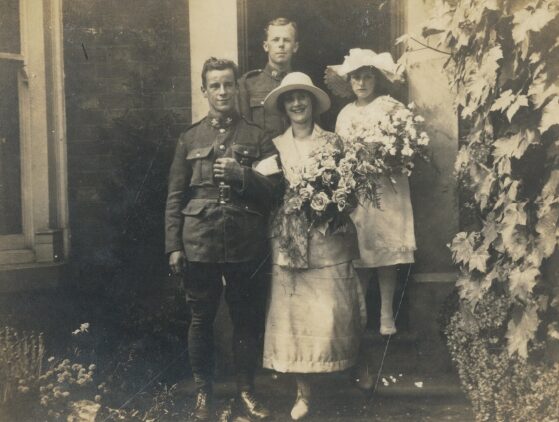
Evelyn drove the tractor and did her share of farm work as well as raising their four children. As a child I used to love visiting my grandparents. We went every week and I loved to wander in my grandparent’s orchard, particularly in springtime when the plum trees were in full bloom. It gave me a wonderful sense of freedom to be able to roam the property on my own. My brother and I helped my grandfather Roy make wooden apple boxes to export NZ apples to the UK.
We helped hammer in the nails and paste the unique NZ Apple label on to the ends of the boxes. If we were lucky we helped out in the honey shed where honey was extracted and churned before being siphoned off into huge barrels.
I recall my grandfather as a quiet and gentle man who was always interested in my schooling and my grades. He was fond of his food and had his favourite dishes – the most loved being an Italian style macaroni cheese! He loved travel and was a part of a travel club. He didn’t talk about the war to his family, and it is only through reading his war diary after his death that we pieced together some of his involvement in battles in the latter stages of WWI, and particularly his account of the Le Quesnoy liberation.
Roy was one of the many young soldiers who boarded the Corinthic at Wellington wharf in October 1917 to travel to England. He wrote “I will not say any more about the goodbye as it was the worst part of this journey.” He was a keen and competitive sportsman and enjoyed the various activities on board the ship such as skipping and boxing which were designed to keep the men occupied and fit. Given his engineering studies, he was fascinated by the navigation of the Panama Canal and the lock systems in place. Of course, he was also a keen observer of the local girls in each country, assessing their looks against the NZ girls. They never really stacked up, although the girls in Halifax, Nova Scotia got a favourable mention as being “more like our NZ girls”. Food of course was of constant importance to a soldier. He often described “a good feed” at a good price, such as the three course dinner he and Tom enjoyed for 35 cents whilst on shore leave in Halifax.
They arrived in Liverpool on Friday 7th December 1917 and were trained to Sling Camp near Bulford, arriving at 4am on a bitterly cold day. In his diary, Sling Camp was notable for the bitter cold and the excellent food! He remained at Sling until February 14th spending many an evening with the lads at the local YMCA. The next stop for the NZ boys was Grantham camp where they joined forces from Australia, Canada and England. The troops were trained and drilled to be battle ready.
Roy left for Camiers, France on 29th March 1918, and then on to Pas where he was digging trenches on the front line.
Convalescing
On 10th June Roy was sent to hospital in Rouen. In his diary (which was written to send home to his parents) he just writes that he was “sick”. His army records tell a different story as he had lung haemorrhaging from being gassed. He spent two months in Rouen convalescing but was frustrated at not being able to return to his unit. He was at a British hospital staffed with American nurses and he seemed to be quite popular with them. He was given jobs tending the flower garden and enjoyed exploring the ancient town, commenting on the beautiful cathedral, painted so many times by Monet during his life.
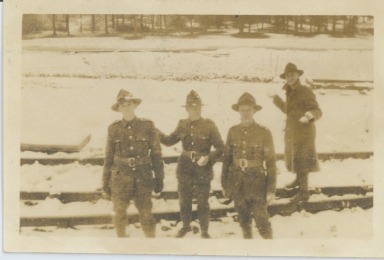
He was somewhat sad to leave the American nurses and return to No.2 convalescence camp and eventually returned to the front to rejoin his regiment in August 1918 travelling to Buchy, Camiers and Candas and then on to Bapaume. He wrote “Had a very interesting journey through a deserted battlefield…it seemed like a deserted hell that was allowed to go cold – the ground was strewn thick with wreckage and every inch of ground was cut about with shells. Bapaume is just a mass of ruins.”
He makes no mention of the battles; only that their Division came out of there to reorganise. They moved back to the line on September 28th to a camp near Flers and then on to Thilloy.
He wrote about terrible plane battles with the aviators falling from the burning wreckage – an image which stayed with him for a long time; about crossing the Hindenburg line of defence and the famous canal, and the resilience of the boys singing together at night after burying the dead all day. They marched on to Beauvois and Solesmes.
His last engagement was in the liberation of Le Quesnoy. He wasn’t a part of the assault on the ramparts but was one of the machine gunners providing covering fire in the small villages on the outskirts. He wrote of the battle of Le Quesnoy.
“Big stunt – up at four oclock – breakfast at 4.30. Noise of guns terrific. Our men advance – we follow Hawkes Bay – air seems to be thick with whistling and whining shells – pass quite a lot of fallen men – ours as well as Fritz’s. Rest in sunken road for a while and then on again – air is thick with the smoke and gas from our guns – occupy a house close by Hun battery out of action – go on – aeroplane fight – one of our machines is sent down in flames. While waiting for the barrage to lift we have a snack and then on once more to our objective. Machine gun bullets whistling in all directions. Have an exciting time while trying to reach an old farm house. Second Brigade pass through us and go ahead. We stay at old farmhouse – carry in wounded Hun from the trench. He was badly hit in one leg.”
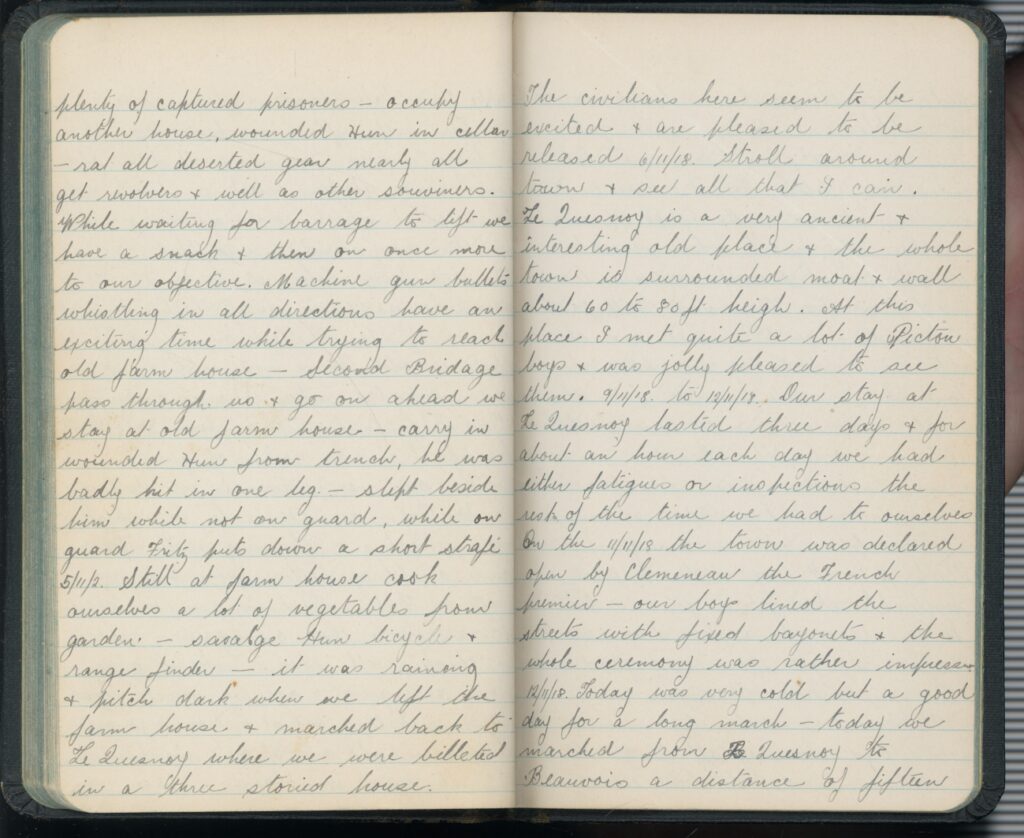
He was later marched to Le Quesnoy and billeted there.
He writes “Le Quesnoy is a very ancient and interesting town and the whole town is surround by moat and wall about 60 ft to 80ft high. The civilians here seem to be excited and are pleased to be released. I met quite a lot of Picton boys and was jolly pleased to see them.”
“On the 11/11/18 the town was declared open by Clemenceau the French Premier – our boys lined the streets with fixed bayonets and the whole ceremony was rather impressive.”
On 12th November, the troops were marched to Beauvois, and marched and trained 240km through Belgium, on to the Rhine and finally to Cologne.
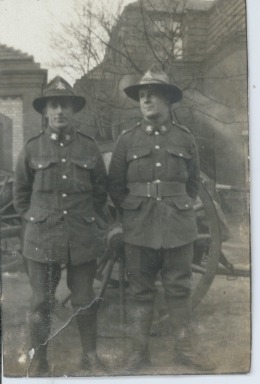
He wrote of Cologne:
“Our battalion was billeted in a large boarding school, a splendid place and we had almost every convenience. Close beside our billet was a paddock full of motor wagons that the Hun was collecting to hand over to the Allies. A few minutes’ walk from our billet was an engineering works where gas and oil engines were being made by the hundred. I spent a good deal of time there and was most interested in the way in which the Huns did their work and their methods. Although they are our enemies and competing for the world’s trade it did one’s heart good to see the way in which they worked.”
Roy arrived back England in February 1919 and finally disembarked in New Zealand on the 5th October 1919.
In honour of his service and his story, I travelled with friends to Amiens and Le Quesnoy in 2019. It is a most beautiful town and my grandfather was right – the ramparts are massive! It was no surprise that the town remained in German hands for much of the war.
A very kind local couple showed us the NZ memorial where the NZ soldiers scaled the wall. I was excited to also be a part of the Anzac celebrations in 2025 – to visit the wonderful museum now established in Le Quesnoy and to also have the opportunity to visit some of the small towns surrounding Le Quesnoy where I tried to imagine him hunkered down, providing covering fire and where his words might come to life again.
